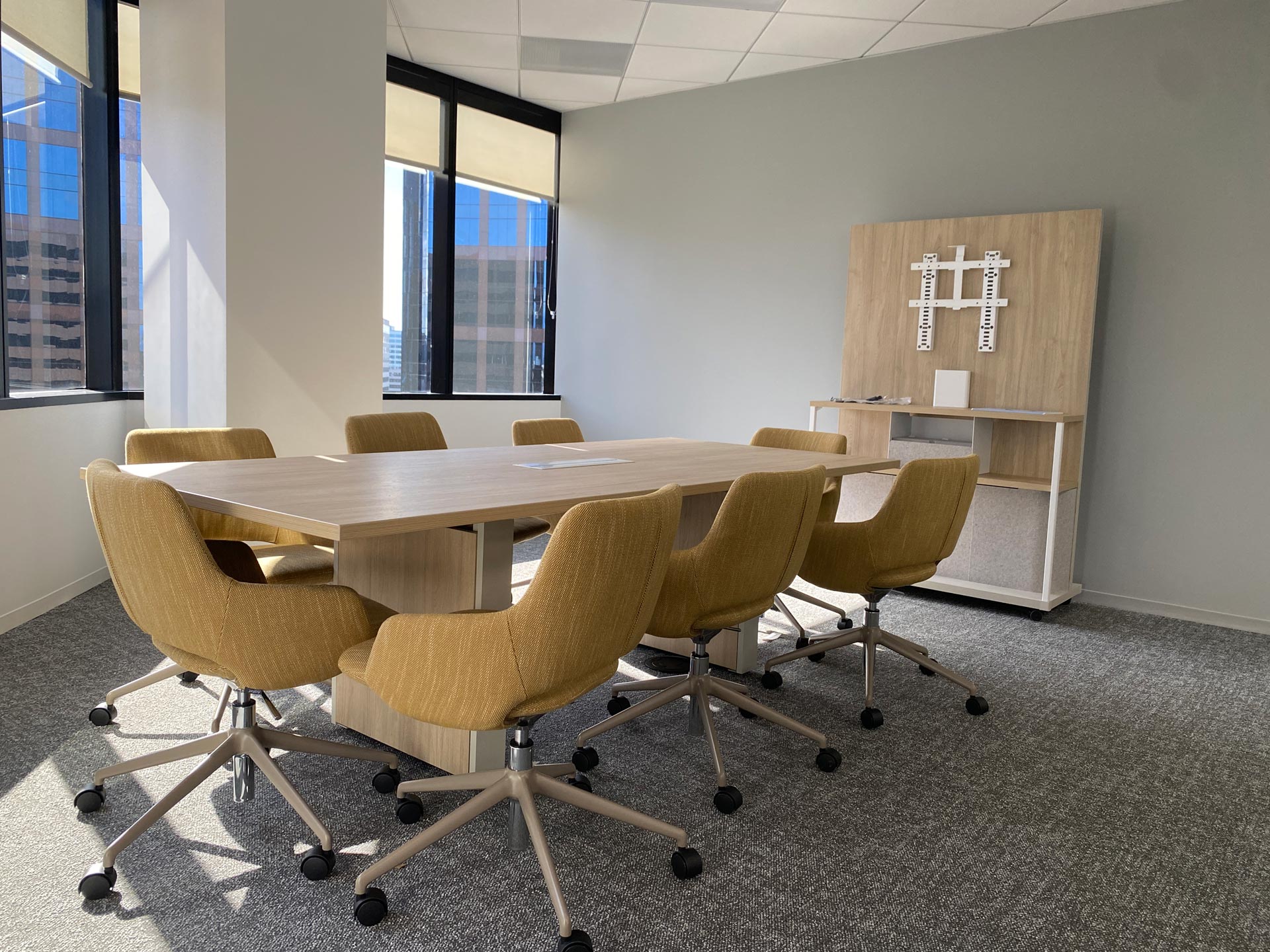
Back to the Office: Exploring the Latest Trends in Office Furniture

As the world continues to transition back to office-based work environments, the significance of reimagining office design has never been more apparent. Employers are faced with the task of not only attracting but also retaining top talent in an increasingly competitive job market. This shift has sparked a demand for office spaces prioritizing employee comfort, well-being, and productivity.
In this ever-evolving commercial real estate landscape, the traditional office space concept is undergoing a profound transformation. With remote work becoming more prevalent and the demand for flexible, innovative environments rising, businesses are reimagining their approach to workspace design. At the forefront of this revolution is EMMES Realty Services of California LLC, which has partnered with bluespace interiors and Office Solutions to reshape physical spaces and lead the charge in setting new trends in office furniture and design.
We recently spoke to Samantha Mudd, manager, new business development at bluespace Interiors, about designing office spaces at Centerview at the Irvine Concourse, EMMES’ premiere office park in Irvine, the latest trends in office furniture and design, and how they cater to the evolving needs of today’s workforce.
The Rise of Employee Amenities: In response to the workforce’s growing expectations, Mudd said employers are incorporating a plethora of amenities into office spaces. From on-site grab-and-go lunches to gym facilities and childcare services, these amenities are not just perks but have become essential in attracting and retaining talent.
“There is a new expectation in the workforce asking for more amenities than in the past,” she said. “Attracting and retaining long-term employees has become more competitive among those hiring. Employees want to be in an office to feel a sense of belonging, connection, and collaboration. Creating an office environment that incorporates personal and shared space is crucial to attracting and retaining top talent.”
Millennials and Gen Z Preferences: Mudd said today’s workers seek diversity and flexibility in their work environments. They value a mix of personal and shared spaces, as well as the freedom to choose where and how they work.
“They absolutely want choice, and the furniture to complement the diverse ways they work,” she said. “They care about their spaces and the ergonomic features that will support the way they work. They can work from anywhere, so making the office feel like a mix of home and work is appealing.”
Mudd reiterated that ergonomics remains a top priority in office spaces, with height-adjustable desks becoming a standard feature. Flexible workstations and privacy pods offer employees the option to work in various settings, catering to different work styles. Power accessibility is another key trend, with furniture integrating power outlets to support the use of electronic devices.
“Many of the new generations coming into the workforce are looking for diversity in the environment. They are interested in private space, both territorial and audible,” she said, adding that open shared spaces are a great attraction tool for Gen Z workers.
Mudd said it’s important to keep in mind that every business is different and that means a different company culture, and furniture needs to support the way people work based on function.
“Collaborating with industry leaders like EMMES has provided insights into creating innovative and dynamic office environments,” Mudd said. “EMMES’ focus on providing state-of-the-art amenities for tenants and visitors alike sets them apart as a leader in this space.”
Mudd said carefully curated office spaces coupled with vast amenities make Centerview very attractive to tenants, employees and visitors alike.
“The EMMES team and Centerview property are amazing,” she said. “The amenities make going to the property a no-brainer — I can charge my car, have a great client lunch or happy hour and be back upstairs in the suite in just a few minutes. Not to mention the proximity to the airport for clients and partners traveling in and out of town.”
According to a recent Allen Matkins report, “tenants are paying more attention to the spaces they inhabit, including where they are located and how they can use them to attract and retain talent. They’re looking for ways to encourage workers to return to the office by providing them with amenities, technology, and workspaces they don’t have available at home. When evaluating buildings, they consider factors like walkability, bandwidth capabilities, nearby restaurants, and more.”
“The evolution of office furniture and design reflects a shift towards creating environments that prioritize employee well-being, collaboration, and sustainability. By embracing these trends and partnering with industry leaders such as bluespace and Office Solutions, EMMES is shaping the future of workspaces,” said Justin Nguyen, senior vice president of asset management for EMMES. “We are thrilled to work with bluespace, which stands out in the industry for its comprehensive range of services and products, tailored to meet the diverse needs of clients. From customized furniture solutions to sustainable design options, bluespace offers a holistic approach to office furnishing and management.”
Beyond furniture, bluespace also has eco-friendly and sustainable options, including how the furniture is manufactured from partners and how old furniture is disposed of. The company’s curated collection of sustainable solutions are carefully chosen to reduce environmental impacts, another attraction for today’s workers.
“We strive to connect you with environmentally conscious design, along with smart uses of natural resources in production and delivery,” Mudd said. “We believe that sustainability is more than just repurposing materials; it is a holistic strategy combining community involvement, environmental stewardship, and accountability to educate others.”
In conclusion, the evolution of office furniture and design reflects a shift towards creating environments prioritizing employee well-being, collaboration, and sustainability. This signifies a departure from traditional cubicle-bound setups towards dynamic spaces that inspire creativity, facilitate interaction, and promote a sense of community among workers. This is the future of work.

evertypedesign